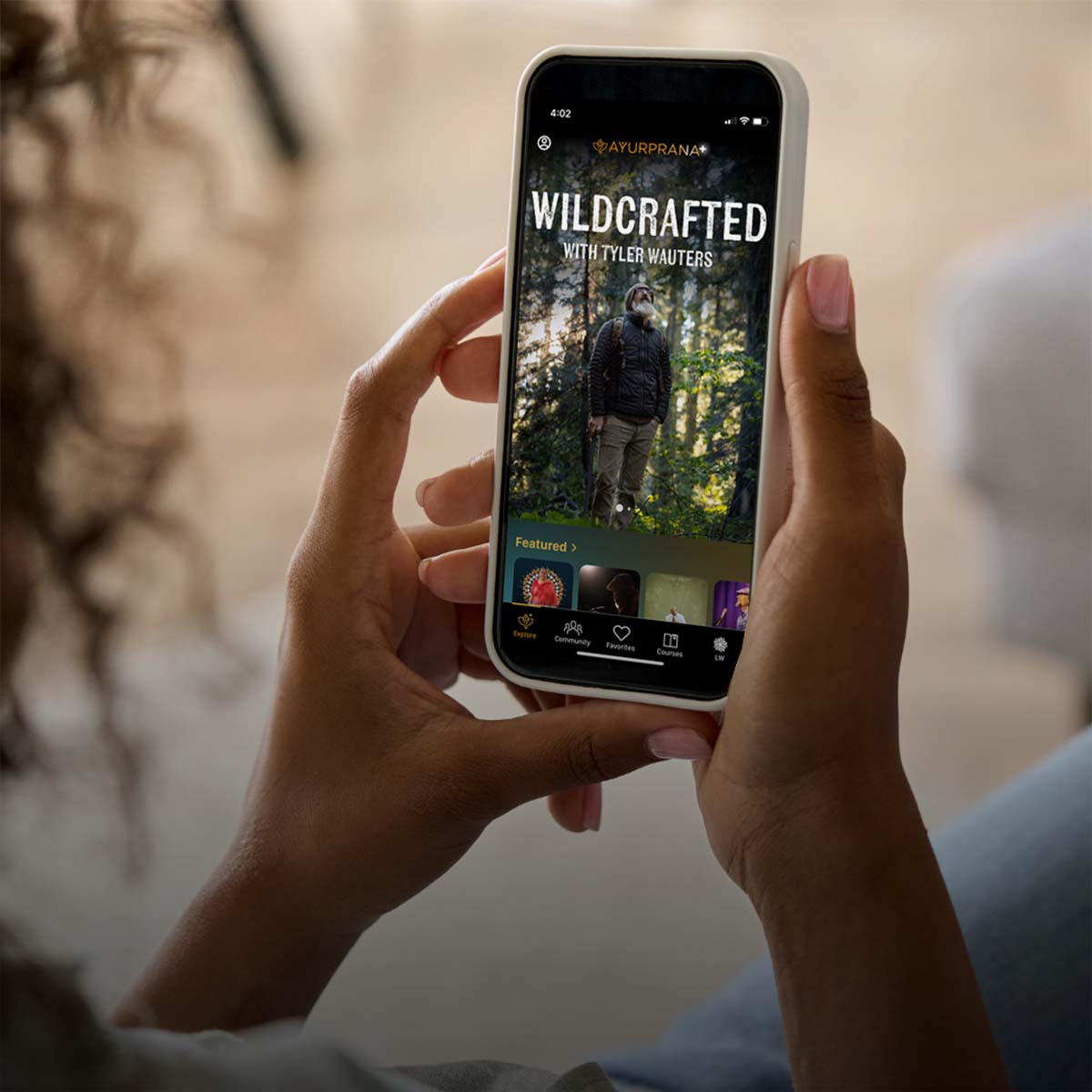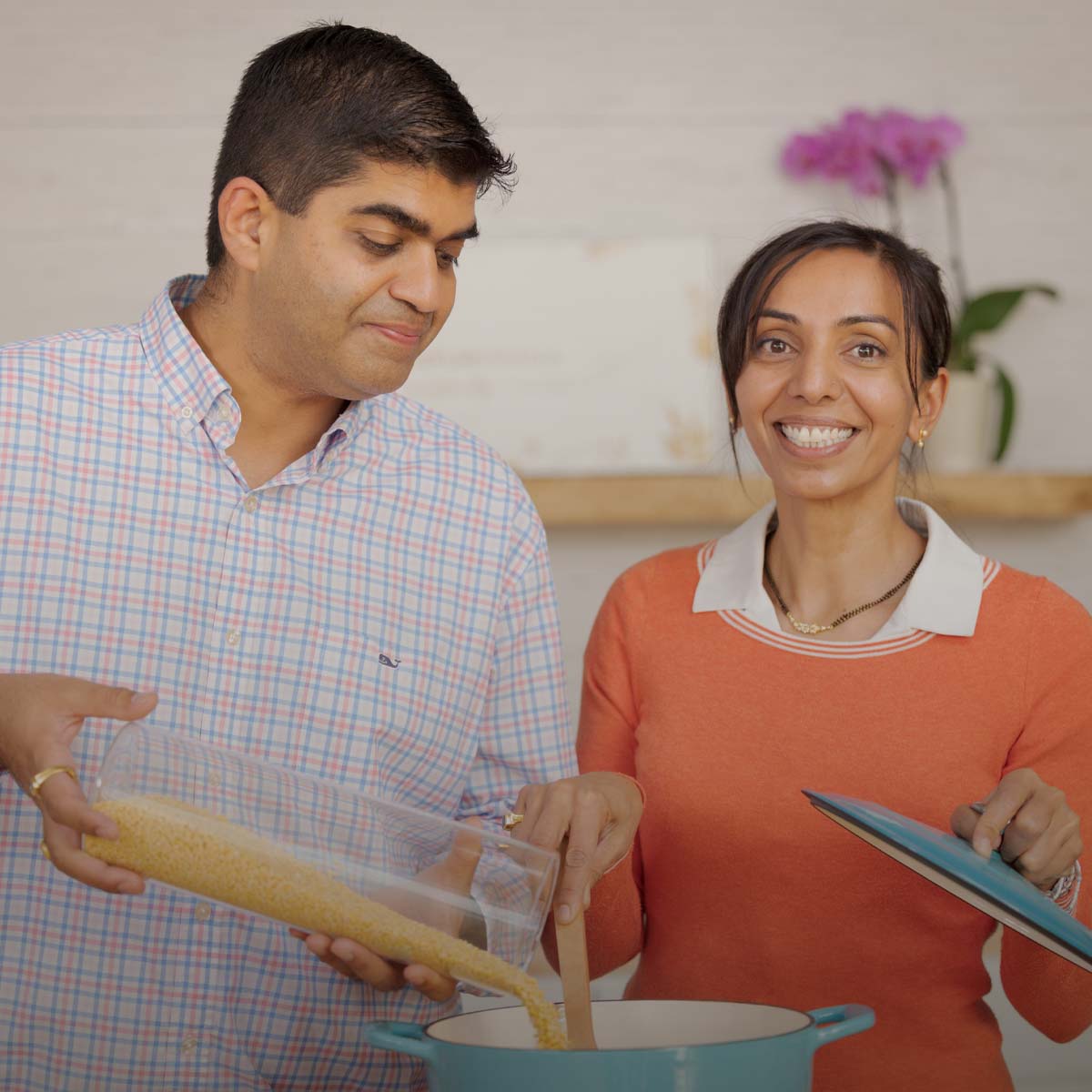In Ayurvedic tanmātra chikitsa or subtle element therapy, we can use sound and mantra to heal these vāta imbalances. The subtle elements are the manifestations of the five great elements (Ether, Air, Fire, Water and Earth) as they correspond to our five senses (Hearing, Touch, Vision, Taste and Smell) respectively. The most influential subtle elements to Vāta dosha are sound and touch as they come closest to the elemental composition of vāta’s nature; Ether and Air.
The meditation technique So’ham, uses active listening to the sound of the breath as it naturally forms the syllable ‘So’ on the inhale and ‘Ham’ on the exhale. It is thus one of the most beneficial practices to ground Vāta.
The most influential subtle elements to pacify Vāta dosha are sound and touch as they come closest to the elemental composition of Vāta’s nature; ether and air. Sound creates expansion of space and thus relates to the principle of time. Touch creates movement and relates to the principle of change. The art of listening is one of those quintessential therapies that is incredibly healing for all Vāta ailments. Listening gives space for all energies that are erratic to calm down and promotes all energies to move in their correct direction, with proper speed, in the right rhythm.
As every individual has a unique genetic constitution, so does every individual have a unique sound. That primordial sound is known by deep listening to the breath, and that sound goes deeper and deeper, into the deepest layer of the mind. Our DNA molecules recognize that sound and start mobilizing molecules of profound joy. Therefore, each body is a chemical laboratory, and we can change the inner biochemistry through So’ham meditation, because sound is the pathway to the inner pharmacy, healing body, mind and consciousness.
Download instructions to practice So'ham here.
From a grammatical perspective, So’ham is the conjoining of two Sanskrit words, the aspirated saḥ and aham, which if one speaks it quickly and smoothly naturally mutates into So’ham. Aham means ‘I am’ and saḥ is the nominative singular declension of ‘That’. ‘That’ used in this context is generally accepted to refer to our deepest essence, the underlying substratum of all that is. That in which we live and That which is in all of us giving life to innumerable different lifeforms. So, ‘So’ points to that universal mind, just like in one of the Mahavakyas, the great sayings of the Vedas, that says ‘aham brahmasmi’, I am the absolute consciousness.
‘Ham’ also happens to be a seed or ‘bija’ mantra for healing the mind and body through balancing the ether element and the throat chakra, clearing any guilt and thus enabling us to express ourselves from the heart. In the center of the heart resides our ahamkara, the individual identity or ego, which is the product of the accumulation of karmic and ancestral impressions of education, diet, habit, lifestyle and emotions.
Ahamkara is a biological necessity, but it can become too demanding, driven by a psychological appetite for separation, and we end up with a deep dissatisfaction about our own consciousness.
When we exhale ‘ham’ and empty the contents of the individual mind, we cross its border, and it merges into the universal mind ‘So’. A taste of the universal identity causes a profound healing to take place. This is why practicing So’ham heals the heart space, sets it free from the imprisonment of a limited self-image and fills it with the knowledge of our ultimate identity. It results in inner peace, divine love and profound joy.
Exhaling or letting go is another word for surrender and it opens the doors of the heart allowing awareness to stream in. This relationship with the exhalation is one of nonspecific passion; the absence of the desire for worldly experience. It is compassion, because in this fully alert act you are giving back to mother nature all things you have borrowed from her to construct your identity with. Because all experiences feed our individual identity. It is in this gratitude and understanding that the genuine wish for wellbeing for all arises.
Commonly, we take a lot from nature, but we are not ready to give back. This is not our true nature. The whole of creation rests on the concept of receiving and giving back and this creation is for us to reach our ultimate nature. Practicing So’Ham is not only for our own lightness and upliftment but contributes directly to the upliftment of society.
When the two currents, inhalation and exhalation, are observed, felt and understood over a long period of time with diligence, their churning creates an enormous energy. It is an energy that gives you the necessary ability to pay tremendous attention to the more subtle aspects of being that are found in the gap in between two breaths. The space in between two thoughts, where enquiry into the nature of existence by direct perception can happen.
May we all gracefully let go of the old and connect with our essence in this beautiful lifetime.
For more on this practice and its benefits, enjoy this video with Vasant Lad, BAM&S, MASC.
________________________________

Robin Voss, CAP, RYT-200 is a graduate of the Ayurvedic Institute’s Ayurvedic Studies Program levels 1 and 2 and holds a YTT 200 hr certificate. He is currently working as an Ayurvedic practitioner and is part of the faculty of the Ayurvedic Institute. Learn more...
Frequently Asked Questions
1. What are the benefits of sohum mantra?
Sohum mantra gently guides you into a state of calm awareness by harmonizing your breath and mind. Through this simple yet profound practice, you may find moments of peace, centeredness, and connection to your true nature. It is an invitation to slow down, listen deeply to yourself, and rest in the present moment.
2. What does the ham mantra mean?
The "ham" in Soham is a sacred sound that naturally arises with your inhalation. It embodies the essence of life and consciousness—the whisper of your inner spirit. This sound is part of a continuous cycle: "so" with the inhale, and "ham" with the exhale, reflecting the rhythm of existence itself.
3. How to chant "sohum"?
Find a comfortable seated posture where your spine can be straight and your body relaxed. With each inhale, silently think or feel the sound “so,” and with each exhale, gently release the sound “hum.” Allow the mantra to flow naturally with your breath—no force, just presence. As you practice, you will likely notice a deepening connection to your breath and a soothing rhythmic harmony within.
4. What is the difference between OM and Sohum?
OM is a powerful, sacred sound symbolizing the cosmic vibration of all creation—a universal seed mantra. Sohum, in contrast, is intimately tied to your personal breath cycle, meaning “I am that.” While OM connects you to the vastness beyond, Sohum gently leads you to recognize your own pure essence in every breath. Both support awakening, but through different subtle energies.
5. What does "so hum" mean in meditation?
“So hum” is a living meditation, a sacred reminder that your breath is a bridge between your inner self and the world around you. It signifies “I am that” — a statement of unity where the self meets the infinite. In meditation, repeating this mantra aligns your mind with the flow of life, inviting you to rest in your deepest truth with each breath you take.







